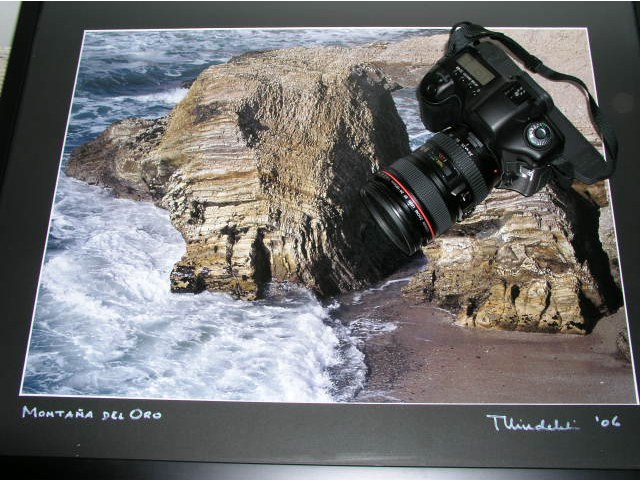Just an expensive way of publishing on Flickr?
Yesterday I wrote about my fifteen months with Canon’s 5D camera, explaining how, for the most part, it is just right for my needs. These focus largely on the making of large prints for display in the home or in exhibitions. The large, grain free sensor in the 5D makes all that possible. Nay, easy.
But the chances are that you do not need the 5D in the sense that I do.
From a pricing perspective, Canon positioned this camera above its semi-professional 30D but well below the full frame sensor 1D, which is more than twice as costly. The latter, with its heavy duty execution and very fast motor drive is probably just the ticket for hard working professionals, banging away thousands of snaps weekly in weather where a sealed body makes sense. Now the 5D has neither the rugedness or fast frame rate of the top of the line model, and is poorly sealed from the elements. It also has quite a few less pixels in the sensor, though many experts seem to be of the opinion that the 5D’s sensor makes a better compromise between pixel count and print quality. We are probably splitting hairs here.
So the 5D would appear to be the advanced amateur’s tool of choice; one definiton of ‘amateur’ being one who pays for his own equipment or does not generate a significant revenue stream from his photography. I have no doubt that thousands of weddings have been recorded using this tool, for very modest pay.

But wait a minute. You can get as good an 8″ x 10″ print – which is ‘large’ for most consumers – from a 5 mp point-and-shoot. How many of us have 18″ x 24″ wedding snaps on the wall, after all? You want shooting speed, no shutter lag and interchangeable lenses? You may get a pretty lousy viewfinder with the cropped frame Canon consumer SLR bodies but get a Nikon D80 or D200 and you get a proper viewfinder at half the price of a 5D. So now you have a fast camera with a great lens range at much less than the 5D.
Why pay more?
There is only one reason I can see, which is that you consistently want to make prints with medium format definition and detail. And those prints have to be big, meaning 12″ or more on the short dimension. That’s right about where cropped sensor originals begin to suffer when enlarged.
Now let’s face it. How many photographers, in a digital age, make prints, let alone big prints? I have no idea but would guess it’s under 1%. Most of us, of course, display our work on the web, whether in web sites or through picture sharing networks like Flickr.
So I checked my web site. Most of the snaps are 7″ x 5″ on my 17″ diagonal screen, whose display area is 14.5″ x 9″. By the time you add navigation controls, headers and menus, there’s a lot less than that available for display, unless you like things crowded. The typical file size of these web pictures is 100-200 kilobytes. A one megapixel point-and-shoot, in other words, is more than adequate to provide decent detail in this display medium.
So unless you just like the 5D for unrelated emotional reasons, or just have a bonus burning a hole in your pocket, save your money and go with one of the many cropped sensor alternatives at a far more reasonable price. Otherwise it’s rather like driving a Porsche to get the groceries. Nice, but hardly necessary.